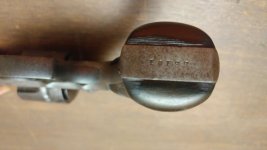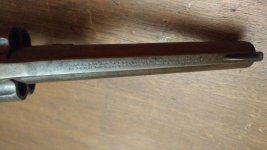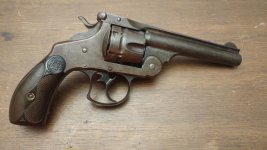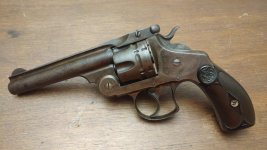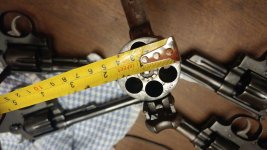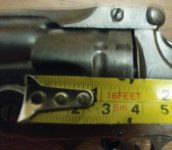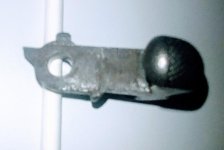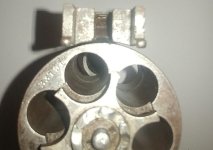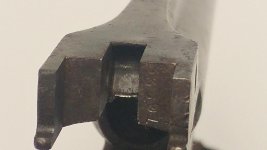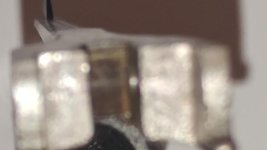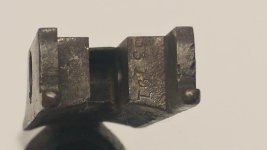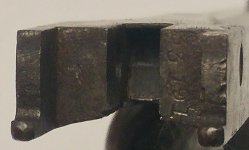A PIECE OF CAKE
Thank you Ed. That is impressive, I do not believe I have ever gotton a mfg date before. I do not see any military markings on this DA NM3. I am assuming that it is a commercial model. Can you tell if this was a blue or nickle by what is left of the finish?
The action in both single and double work well. The revolver cycles well, the timing is good and, lock up also. I was wondering if there is a spring catch to the break top latch or is it just free movement for lack of better description? It just seems like there would be a more refined latch system or if this is normal function of this model? To better explain, the top break latch seems to move up to open easily after the safety has been released. I would think that there would be some tension on the latch to help keep it in the closed position. I do not visually see any detent provisions on the latch or frame.
I am unable to remove the stocks, as the screw keeper is rotating in the right stock when I turn the screw.
Both 4 and 6 inch barrels were discussed above. Are they both less prevalent than the 5 inch barrels?
Thank you all for the insight and comments.
Latch Stuff: Yes, there's a spring as part of the latch assembly---or is supposed to be. So now it's autopsy time:
1. Open the gun.
2. Remove the screw directly ahead of the latch.
3. Remove the latch---straight back. (Note there's a hole in the top strap (right in front of where the latch used to be)---going in the same direction as the barrel. Inside this hole is/should be the barrel catch cam and it's spring. There'll almost certainly be about a 100 years worth of crud in there too. You can pick at the crud if you want to, but it's a waste of time. Put it to soak in your favorite crud soaker, and go play with your children's mother---for a looooooong time.
4. Back to business: Remove any and everything inside the hole with toothpicks/dental picks/what have you. You will eventually see a little ramp inside the hole---or should see it. Push on it at the bottom---coincident with the bottom of the hole-----with a non-marring instrument (plastic rod/wooden dowel). If it has soaked long enough, it should move---forward----and then back (if there's a spring behind it----as there should be). It's never going to move very far. More soak stuff and more pushing will/should eventually result in free movement of not very much----and it's a stout spring, so some effort is required.
Remember 6th-7th grade general science---and that stuff about inertia and momentum? That's your best bet for getting the little ramp thing (barrel catch cam) out of the hole----if it didn't fall out---which it didn't---because it hasn't soaked long enough---or your soaker stuff isn't good enough---or you didn't clean out the exit hole well enough---or all of the above.
Keep at it.
Now---if there's nothing in the hole besides crud, it's a piece of cake: Clean out the hole. Get a replacement cam and spring, and put it in the hole---spring first. Resist the temptation to lubricate the cam/hole with anything besides a dry lube.
Reassembly is the reverse of the above. (I've always wanted to say that. I've also wanted to kill everybody who's ever said it.)
Ralph Tremaine
And by the by, a "screw keeper" is known as an escutcheon (Good luck with the pronunciation!!) As to the fix, someone will be along directly to help---or I hope they will; because I've forgotten. Although now that I've said that, it seems like mashing on it with a pencil eraser has to do with it. And now that I think about that, it at least makes sense.

